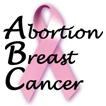Childbearing Protects Women from Breast Cancer Only When Mothers Deliver at 32 Weeks Gestation or Later
Childbearing Protects Women from Breast Cancer Only When Mothers Deliver at 32 Weeks Gestation or Later
Yesterday, journalists reported that scientists at the Fred Hutchinson Cancer Research Center speculated on the reasons why childbearing protects women from breast cancer. They discussed a paper published in the journal Cancer Research. 1
Researchers reportedly told journalists that the presence of fetal cells in the mother's blood "may also benefit mothers by putting the immune system on alert for malignant cells to destroy." 2
Their speculation fails Occam's Razor, a fundamental scientific principle that says any hypothesis can be dismissed if it is unnecessary to explain the phenomenon. Irma and Jose Russo of Fox Chase Cancer Center showed many years ago why a full term pregnancy is protective. 3 4
Nearly all of the lobules in the childless woman's breasts are cancer-vulnerable Type 1 and 2 lobules. Up to 95% percent of all breast cancers originate in these lobules. Beginning early in a normal pregnancy, the hormone estrogen (a carcinogen) causes the breasts to grow by stimulating the lobules to multiply. Therefore, she develops more places where cancers are known to arise.
During the last months of pregnancy, pheromones produced by the fetus - human chorionic gonadotropin and human placental lactogen - play a role in maturing her lobules into fully cancer-resistant Type 4 lobules. By the end of a full term pregnancy, 85% of her lobules are Type 4 and 15% are Type 1 and 2.
A half-century of research shows that abortion raises risk by leaving women with more places in their breasts for cancers to start and that most miscarriages don't raise risk. 5 6 7 Similarly, premature birth before 32 weeks gestation more than doubles breast cancer risk. 8 9 10 11
"Women have the right to know that a 'little bit of pregnancy' is not protective," asserted Karen Malec, president of the Coalition on Abortion/Breast Cancer.
The Coalition on Abortion/Breast Cancer is an international women's organization founded to protect the health and save the lives of women by educating and providing information on abortion as a risk factor for breast cancer.
- 1. Gadi V and Nelson J. Fetal microchimerism in women with breast cancer. Cancer Research 2007;67(19):9035-8.
- 2. "Fetal cell transplant could be a hidden link between childbirth and reduced risk of breast cancer," Medical Research News, October 3, 2007.
- 3. Russo J et al. Expression of phenotypical changes by human breast epithelial cells treated with carcinogens in vitro. Cancer Res 1988;48:2837-2857.
- 4. Russo J. Russo IH. Development of the human mammary gland. In Neville MD, Daniel C (ed). The Mammary Gland, Plenum NY 1987:67-93.
- 5. Brind J, Chinchilli, VM, Severs WB, Summy-Long J. Induced abortion as an independent risk factor for breast cancer: a comprehensive review and meta-analysis. J Epidemiol Community Health 1996;50:481-496.
- 6. Brind J. Induced abortion as an independent risk factor for breast cancer: A critical review of recent studies based on prospective data. J Am Phys Surg Vol. 10, No. 4 (Winter 2005) 105-110. Available at: http://www.jpands.org/vol10no4/brind.pdf.
- 7. Lanfranchi A. The breast physiology and the epidemiology of the abortion breast cancer link. Imago Hominis 2005;12(3): 228-236.
- 8. Melbye M, et al. Preterm delivery and risk of breast cancer. Bri J Cancer 1999;80:609-13.
- 9. Hsieh C-c, Wuu J, Lambe M, Trichopoulos D, et al Delivery of premature newborns and maternal breast-cancer risk. Lancet 1999;353-1239.
- 10. Vatten LJ, et al. Pregnancy related protection against breast cancer depends on length of gestation. Br J Cancer 2002;87:289-90.
- 11. Innes K and Byers T. First pregnancy characteristics and subsequent breast cancer risk among young women. Int J Cancer 2004; 112:306-311.



